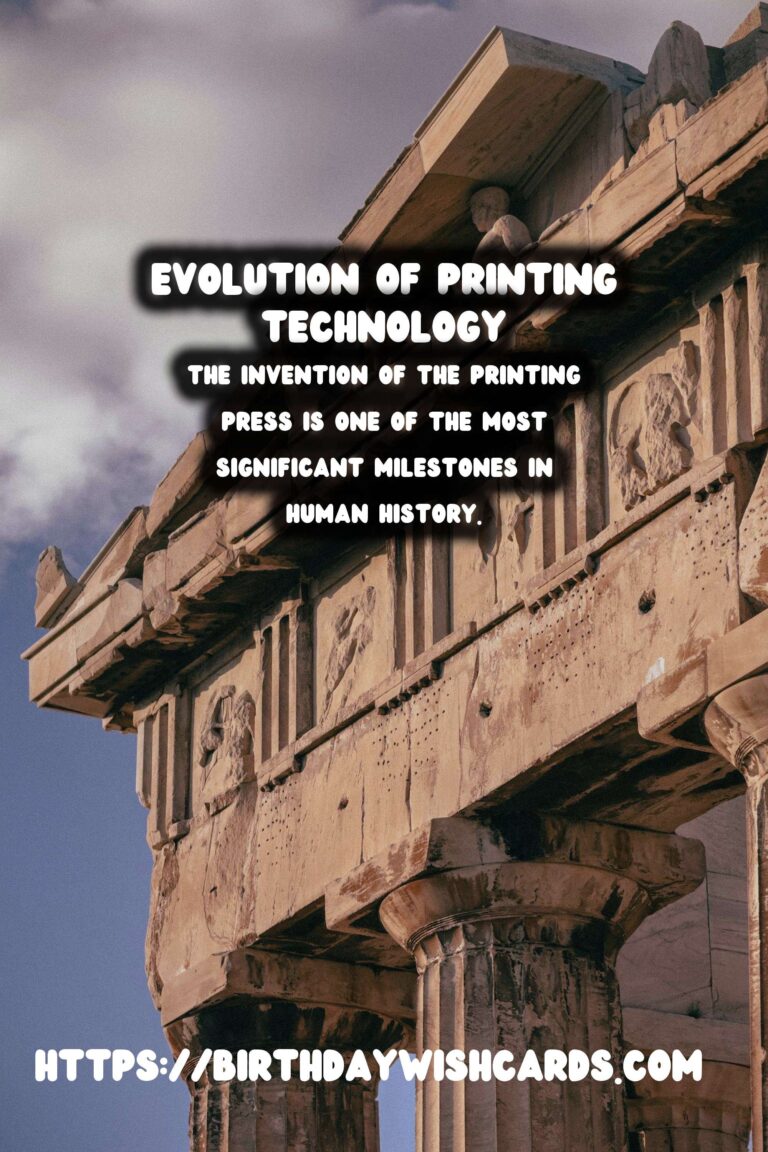
Introduction
The invention of the printing press is one of the most significant milestones in human history. From its beginnings with Johannes Gutenberg’s movable type to the sophisticated digital printers of today, the evolution of printing technology has dramatically influenced the dissemination of knowledge, culture, and information.
Gutenberg’s Revolutionary Invention
Johannes Gutenberg, a German blacksmith, goldsmith, printer, and publisher, introduced the printing press around 1440. His development of movable type printing technology revolutionized the way books were produced, allowing for mass production and the wide distribution of printed material. This groundbreaking innovation played a crucial role in the Renaissance, Scientific Revolution, and Reformation.
The Gutenberg Bible, printed in the 1450s, is one of the earliest and most famous examples of a book produced using this new technology. It marked the start of the ‘Gutenberg Revolution’ and the onset of the modern era.
The Spread of Printing Technology
The success of the Gutenberg press quickly spread throughout Europe. By the 16th century, printing presses were established in more than 200 cities across Europe, leading to an unprecedented rise in the literacy rate and the accessibility of information.
Printing played a vital role in the Protestant Reformation, as it allowed Martin Luther’s theses to be disseminated quickly and widely, reducing the Catholic Church’s control over written material.
Printing in the Modern World
The Industrial Revolution in the 18th and 19th centuries brought further advancements. The steam-powered printing press, rotary press, and linotype machine significantly increased production speed and efficiency. This era saw a boom in newspaper printing, democratizing information for the masses.
In the 20th and 21st centuries, the advent of digital printing and the internet has transformed the printing industry. Modern presses offer fast, high-quality prints, and digital media continues to supplement traditional printing, expanding the global reach of printed material.
Conclusion
From Gutenberg’s metal movable type to today’s sophisticated digital printers, the history of printing is a testament to human ingenuity and the relentless quest for knowledge dissemination. As technology continues to evolve, the printing industry remains a crucial pillar in the landscape of communication and information sharing.
The invention of the printing press is one of the most significant milestones in human history. Johannes Gutenberg’s development of movable type printing technology revolutionized the way books were produced. 









#HistoryOfPrinting #GutenbergRevolution




